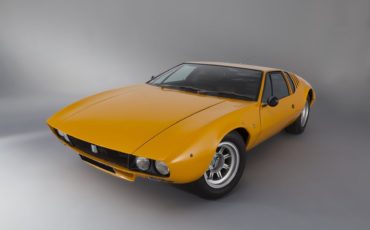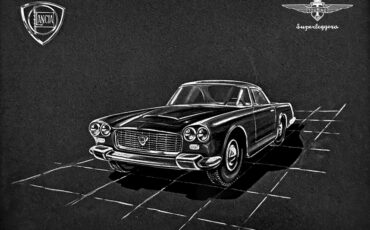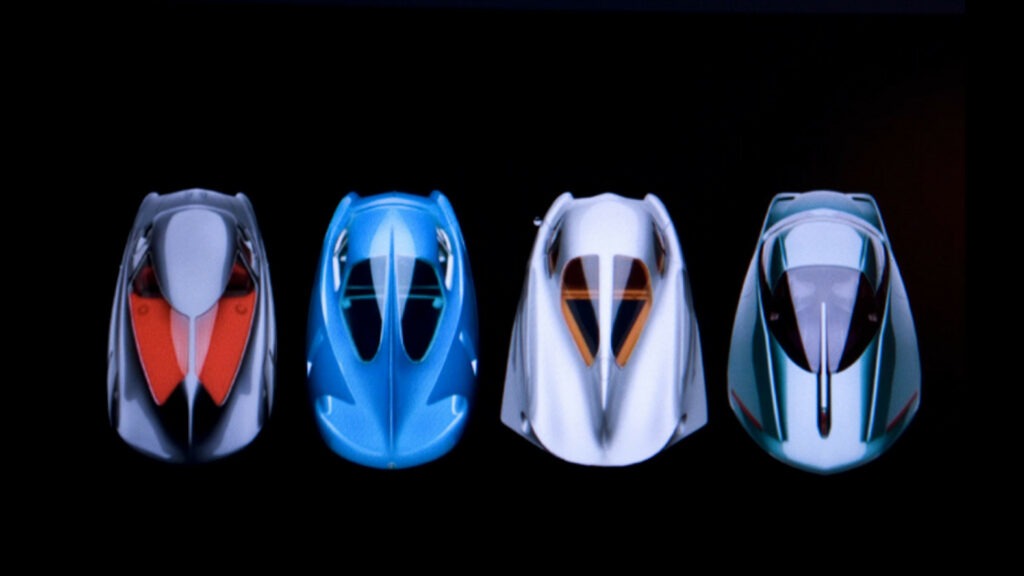
The origin
The Alfa Romeo BAT by Bertone is perhaps the most innovative and spectacular series of cars ever made. Acronym of Berlina Aerodinamica Tecnica, the BAT were built by Nuccio Bertone who commissioned the designer Franco Scaglione, to create three show cars based on the Alfa Romeo 1900C chassis with innovative and spectacular bodyworks with the lowest possible aerodynamic coefficient ever.
Over the years as mentioned, three cars were produced, all designed by Franco Scaglione and built with the help of project manager Ezio Cingolani. Characterized by a very careful stylistic and aerodynamic research which features rear fenders surmounted by large curved fins. For each of the three concept cars, Alfa Romeo provided the chassis of the 1900C with a 100 HP engine and 5-speed manual gearbox sufficient to push the three cars up to 200 km / h.
Unveiled at the Turin Motor Show in 1953, ’54 and ’55, the cars hit the target, reaching an aerodynamic coefficient at its best 0.19 and impress the audience at the Turin show. Their year-to-year launches have given the world an insight into the development and evolution of the design, something that is usually left behind closed doors.
Although none of the three cars were ever mass-produced, the prototypes were not just a marketing strategy for Bertone or Alfa Romeo, but also featured technical and styling innovations that would inspire future models in Europe but also in America.
The B.A.T. 5
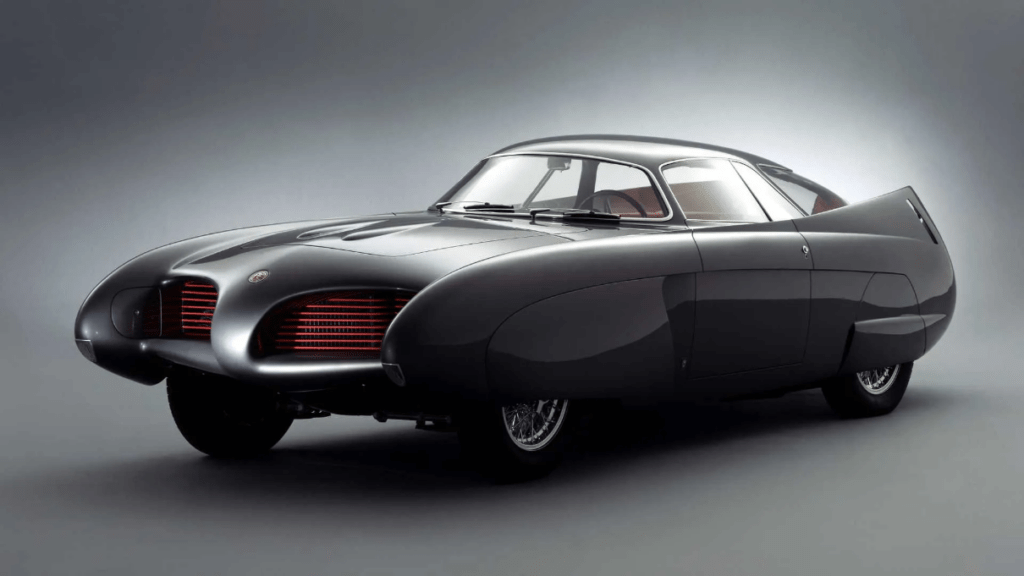
The B.A.T. 5 was the first of the three B.A.T. to be launched at the Turin Motor Show 1953.
The result was a revolutionary car resulting from the talent and empirical aerodynamic studies of Franco Scaglione who, under the supervision of Ezio Cingolani, perfected the concept already expressed previously on the Abarth 1500 Biposto, considered by many to be the first B.A.T. car.
The bodywork, which aims to lower the aerodynamic resistance to a minimum and cancel the turbulence generated by the wheels at high speeds, was built entirely by hand by Bertone’s panel beaters. Most of the adjustments were made by Franco Scaglione himself in the modeling phase under the watchful eye of Nuccio Bertone.
The result achieved by Bertone is an extremely light car, only 1100 kg, a gray finished curvy body with red details, large front and rear overhangs, faired wheels, and above all large fins on the rear fenders.
The front features a large split air intake between the elongated mudguards that integrate the retractable headlights and the absence of the typical Alfa Romeo ‘scudetto”, replaced by a “nose” integrated into the body.
The elliptical side, in addition to the rear fins, has faired front and rear wheels and a large air intake behind the front wheel arch, on which the Bertone emblem is applied. The passenger compartment has a very streamlined teardrop shape with 45° angled side windows and a large panoramic windscreen that integrates perfectly with the almost flat roof.
The most striking part, however, is certainly the tail which features a huge rear window divided into two parts by a thin strip, (a concept we will see later on the Chevrolet Corvette Stingray), the split black exhaust terminal in the center and , most of all, the two “fins” which are almost as high as the roof.
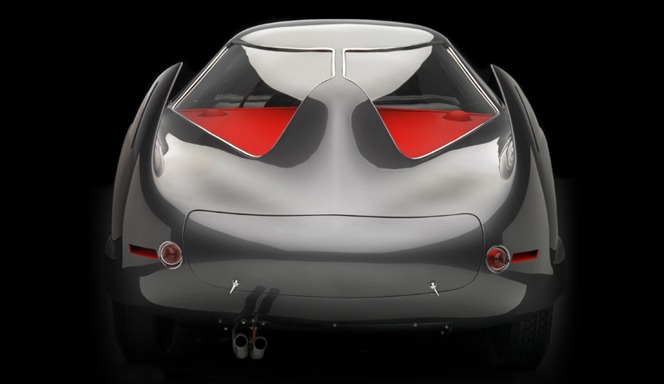
The interior, on the other hand, is rather simple, with two sporty-shaped seats and red leather covered door panels, light-colored floor mats, and a small dome on which the on-board instruments are placed. The three-spoke steering wheel with wooden crown, the three circular instruments, the gearshift lever and the pedal set came directly from the Alfa Romeo 1900C SS.
Furthermore, this amazing design is not an end in itself but is also very aerodynamic, the B.A.T. 5 could boast a Cx of 0.23 which would allow the car to reach a top speed of 200 km/h, over 30 km/h more than the stock 1900 C SS with the same 100 HP engine. At that time Bertone did not have a wind tunnel and to obtain the precious aerodynamic information necessary for the project they used a system, common at the time, based on some wool threads. These were applied to the bodywork of the cars which were driven on the road at different speeds and photographed from another car side by side to observe the movements of the woolen threads in the wind.
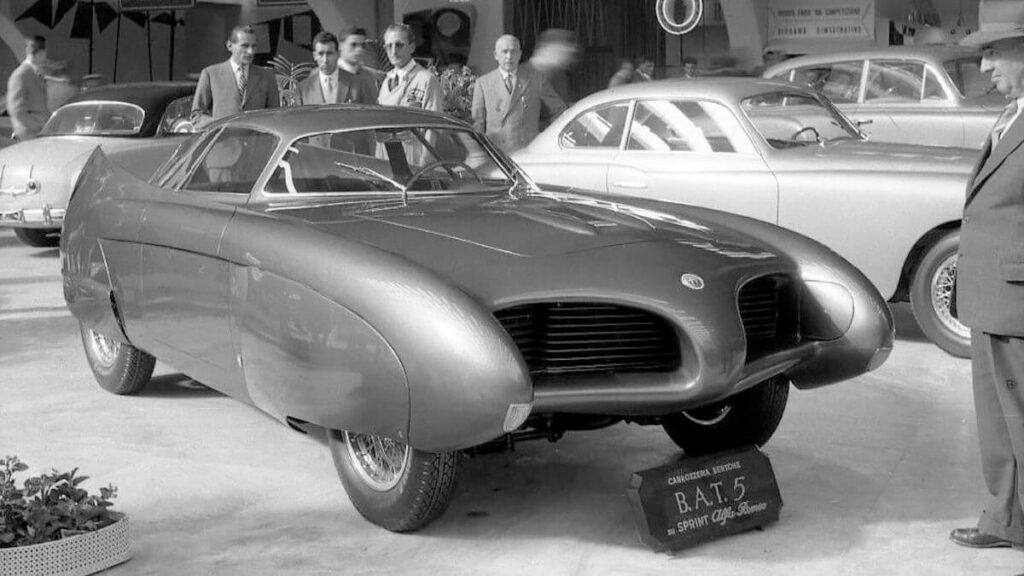
At the Turin Motor Show the car was an immediate success that struck the public with its remarkable “stage presence” due to the design of the aerodynamic bodywork.
After the Turin Motor Show, the B.A.T. 5 was sold to Stanley “Wacky” Arnolt for just $ 7,650. The car was then shipped to California, where Arnolt drove it for over 30 years. In the 1980s he sold it and it was restored to make its public debut with B.A.T. 7 and to the B.A.T. 9, 36 years after the Turin Motor Show, at the 1989 Pebble Beach Concours d’Elégance, where all three cars appeared together for the first time.
After being exhibited all together at the Blackhawk Museum in Danville, California, the three concepts all sold together for $ 14.8 million.
B.A.T. 7
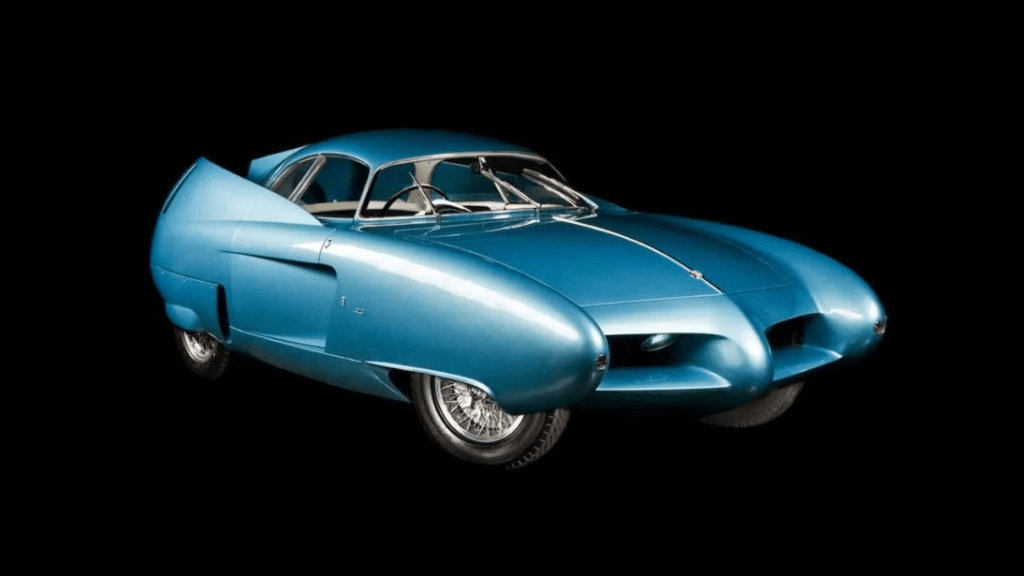
One year after the B.A.T. 5 at the 1954 Turin Motor Show the B.A.T. 7.
For this car Nuccio Bertone asked Franco Scaglione to evolve the aesthetic concepts of the B.A.T. 5 to further reduce the already low coefficient of aerodynamic drag and at the same time continue to impress the public of the shows and Alfa Romeo, which that year was working on the launch of the Giulietta range and collaborating with Bertone itself to also create the bodywork of the 2000 Sportiva with tubular chassis.
Like the B.A.T. 5 the car was designed by Franco Scaglione and built, once again, under the supervision of Nuccio Bertone, by the same team of panel beaters directed by Ezio Cingolani. This made the construction easier and faster.
The design of the B.A.T. 7 is the clear evolution of the stylistic features of the previous model taken to the limit with the introduction of some improvements of the aerodynamic studies done on the B.A.T. 5 which resulted in two even larger, curved and rear fins.
The bodywork, which aims to further lower the aerodynamic resistance and cancel the turbulence generated by the wheels at high speeds, is finished in blue and is even richer in curves and has bigger fins on the rear fenders.
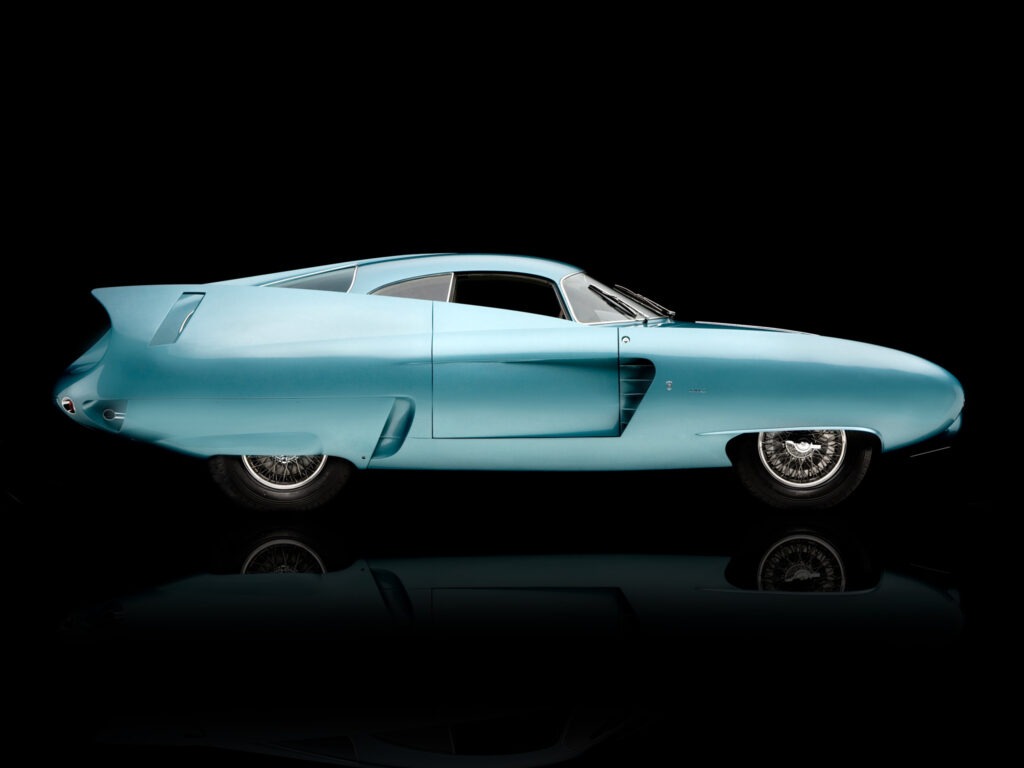
The front is an evolution of the one on the B.A.T. 5 but is even lower and sharper. It is characterized by an air intake between the elongated mudguards and a “nose” integrated into the body, which fills the absence of the typical Alfa Romeo scudetto. The headlights, also retractable, are now mounted on the upper edge of the air intake and are located near the ‘nose’.
The greenhouse has a very streamlined teardrop shape and features a large panoramic windscreen that integrates perfectly with an almost flat roof.
Once again, as it was for the B.A.T. 5, the most stunning part certainly the tail with the huge and sharp “fins”. The rear is completed by two small circular tail lights integrated in the lower part of the bodywork flanked by the exhaust pipes placed inside two openings in the end of the rear wheel covers.
The B.A.T. 7 reached the lowest Cx value of all the BAT series: 0.19, was reached thanks to the extreme design of the fins which, by wrapping the terminal part of the teardrop shape of the passenger compartment, channeled the air flow around the car in the best possible way, reducing the formation of counterproductive eddies. Since Bertone did not have a wind tunnel at that time, this aerodynamic solution was dictated by the experience gained on the B.A.T. 5 with a system, common at the time, based on wool threads.
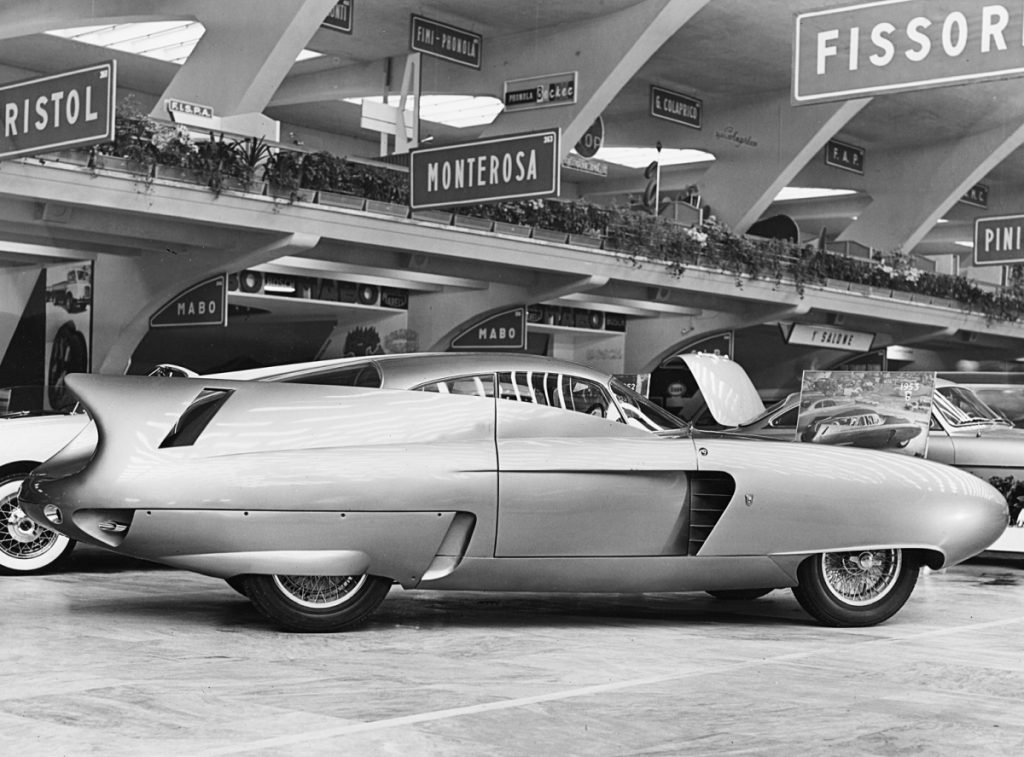
At the Turin Motor Show the car replicated the success of its progenitor by striking the public again with its even more extreme aerodynamic bodywork. Probably the successes of the B.A.T. 7 and the 2000 Sportiva, both designed by Franco Scaglione and built by Bertone, prompted the Alfa Romeo managers to entrust the design and subsequent mass production of the Giulietta Sprint bodies to the Turin coachbuilder.
After the Turin Motor Show, the B.A.T. 7 was sold on January 13, 1955 to Alfa Romeo for 3,850,000 lire, from there it seems to have arrived in the hands of Stanley “Wacky” Arnolt in California where, no one knows by whom, it was repainted red and yellow and participated in several minor races without success.
During this ownership, the fins were cut off the car went through a long period of neglect as it passed from hand to hand until it was finally restored in the 1980s to make its public debut alongside the B.A.T. 5 and to the B.A.T. 9, 35 years after the Turin Motor Show, at the 1989 Pebble Beach Concours d’Elégance where for the first time all three cars appeared together.
After being exhibited all together at the Blackhawk Museum in Danville, California, the three concepts all sold together for $ 14.8 million.
B.A.T. 9
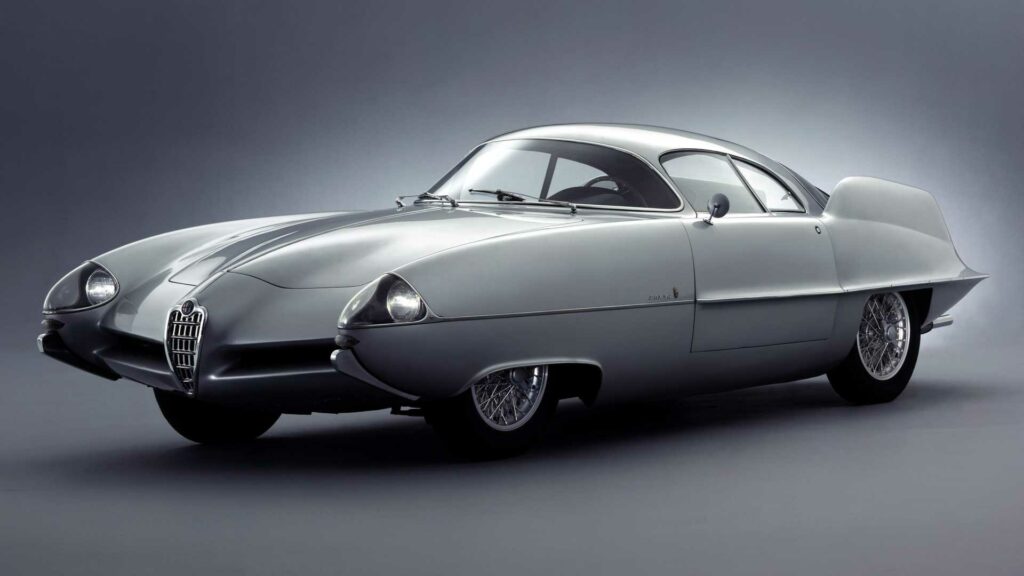
Two years after the B.A.T. 5 and one after the B.A.T. 7 at the Turin Motor Show 1955 Bertone unveiled the B.A.T. 9.
For this car Nuccio Bertone asked Franco Scaglione to evolve the aesthetic concepts of the B.A.T. 5 and 7, and try to make it more like a car suitable for series production without ceasing to impress the public again.
Like the B.A.T. 5 and 7, the car was designed by Franco Scaglione, always under the supervision of Nuccio Bertone, and built by the same panel-beaters directed by Ezio Cingolani, which made the production of B.A.T. 9 even simpler and faster than the previous ones. The design of the B.A.T. 9 is more sober which, while maintaining a close relationship with the stylistic features of the previous models, highlights the desire to make it more suitable for road use and close to the style of the Alfa Romeos on the market.
The bodywork, which in any case aims to have a low aerodynamic resistance, is finished in light gray with a tobacco-colored interior.
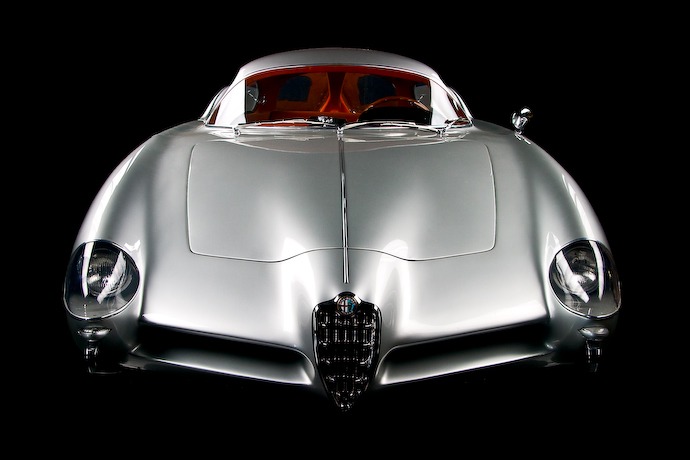
The front is. of course, an evolution of the previous B.A.T.s and is also characterized here by a split air intake between the elongated fenders but, for the first time, it features the typical Alfa Romeo ‘scudetto’. The headlights are now visible and not retractable.
Also here the interior is quite simple with two seats and door panels covered in tobacco-colored leather, blue floor mats and a dashboard with a small dome on which the on-board instruments are placed. The three-spoke steering wheel with wooden crown, the circular instruments, the gearshift lever and the pedal set come once again directly from the Alfa Romeo 1900C SS.
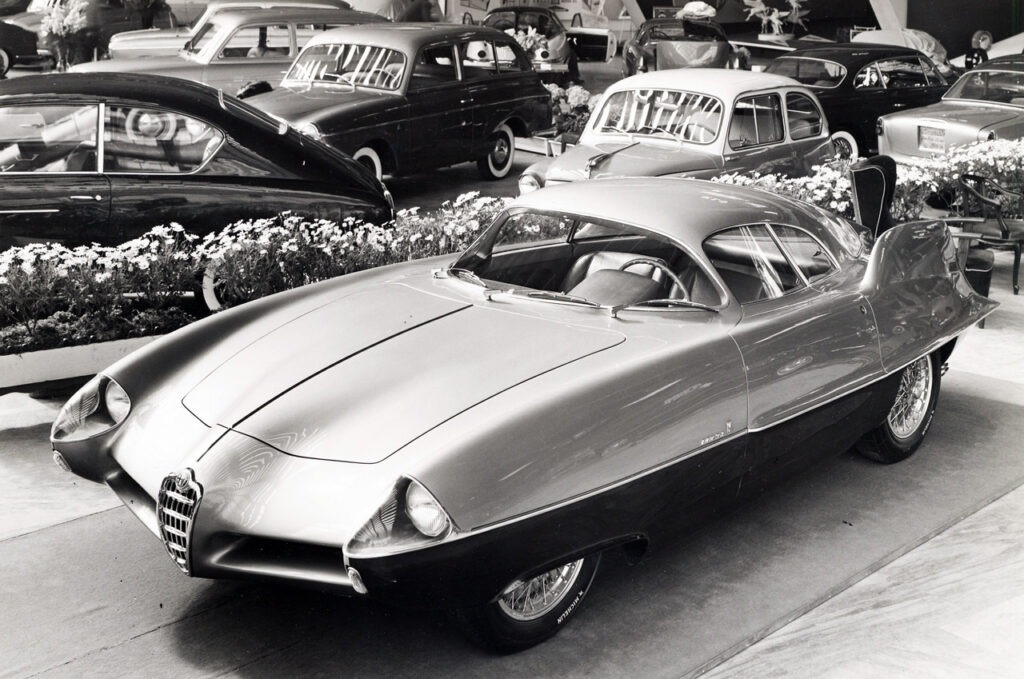
At the Turin Motor Show the car replicated the success of the previous B.A.T.s by striking the public again with its more sober and discreet aerodynamic bodywork.
After the Turin Motor Show, also the B.A.T. 9 apparently came into the hands of Stanley “Wacky” Arnolt and after some time re-emerged as an advertising vehicle for a Plymouth dealership in Michigan, where it attracted the attention of Gary Kaberle. Although he didn’t know exactly what it was and didn’t work, 16-year-old Kaberle saved up enough money to buy the B.A.T. 9 in 1963. Mr. Kaberle, meanwhile become the dentist and husband of a lady named Debbie, after discovering almost by chance what he had in his hands with decided to keep the car in the garage until 1989, when he decided to restore it with the help of Carrozzeria Bertone itself, to make its debut to the public together with BAT 5 and to the B.A.T. 7, 34 years after the Turin Motor Show, at the 1989 Pebble Beach Concours d’Elégance where for the first time all three cars appeared together.
In 1991 Kaberle made the decision to sell the B.A.T. 9 to the collector who already owns the previous two Berlinetta Aerodinamica Tecnica to fund the costs of the treatments that his wife, suffering from breast cancer, needed, giving her another two years of life.
After being exhibited all together at the Blackhawk Museum in Danville, California, the three concepts all sold together for $ 14.8 million.
In 2008 Gary Kaberle, to remember his deceased wife, commissioned Bertone the BAT 11, a concept car inspired by the B.A.T. based on the Alfa Romeo 8C Competizione, with which it undertakes to raise funds for breast cancer research in memory of his wife who died at the age of 39.
B.A.T. 11
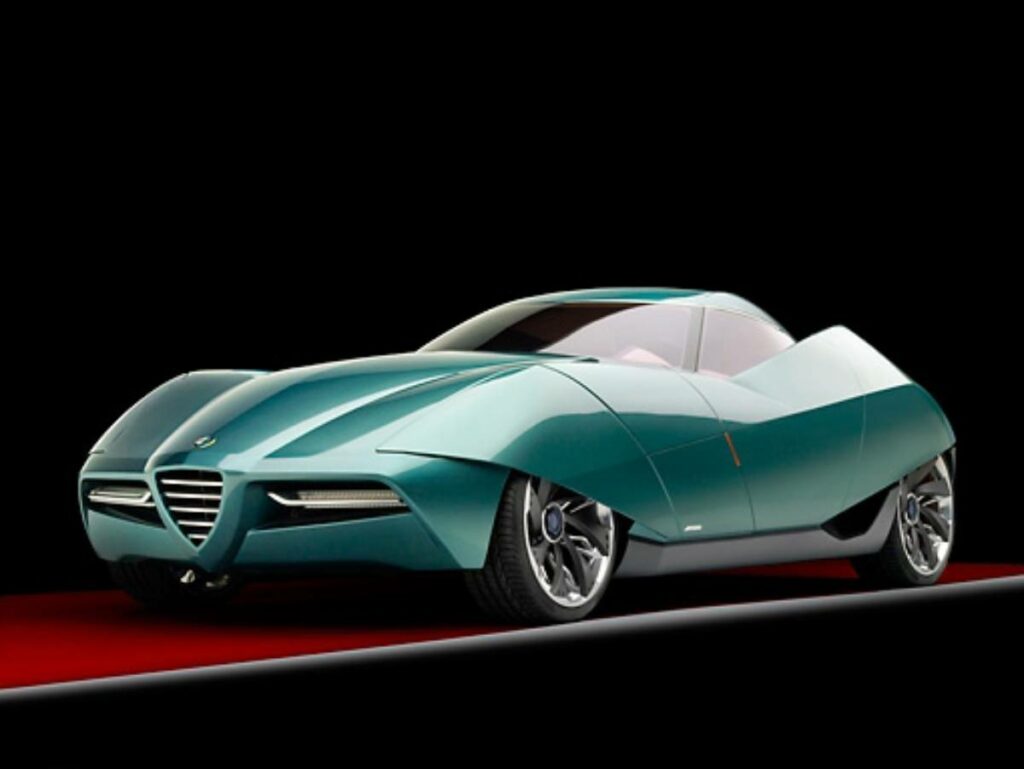
As mentioned. the BAT11 was built by Bertone, commissioned by Gary Kaberle, in memory of his deceased wife.
Its aim was to resume the historic Alfa Romeo BAT family and to achieving an aerodynamic coefficient value equal to 0.19.
There are many references to the progenitor “sisters” of the fifties, from the partial coverage of the four wheels, to the hint of aerodynamic fins at the rear and the modern interpretation of the split rear window.
The car features the Alfa Romeo scudetto that appeared for the first time in the BAT 9 of 1955. The carbon fiber rims are 21 inches characterized by a double-layer design of helical spokes.
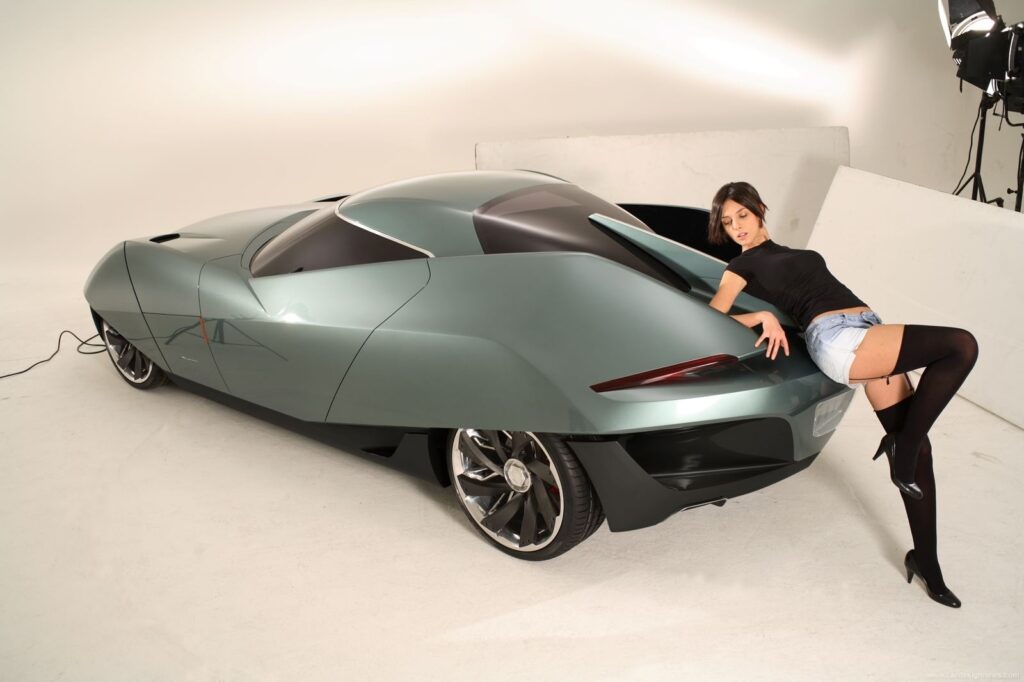
The concept car was unveiled to the public in a world preview at the 78th Geneva Motor Show in 2008, with the particularity that its exhibition did not take place inside the stands of the show, but outside the exhibition area and was presented as an exclusive preview to a limited number of guests, mostly famous designers. The presence at the event was wanted by Marie Jeanne Bertone despite previously Lilli Bertone, wife of Nuccio Bertone and current owner of the company, had denied a possible participation of the Turin brand at the Swiss show.

